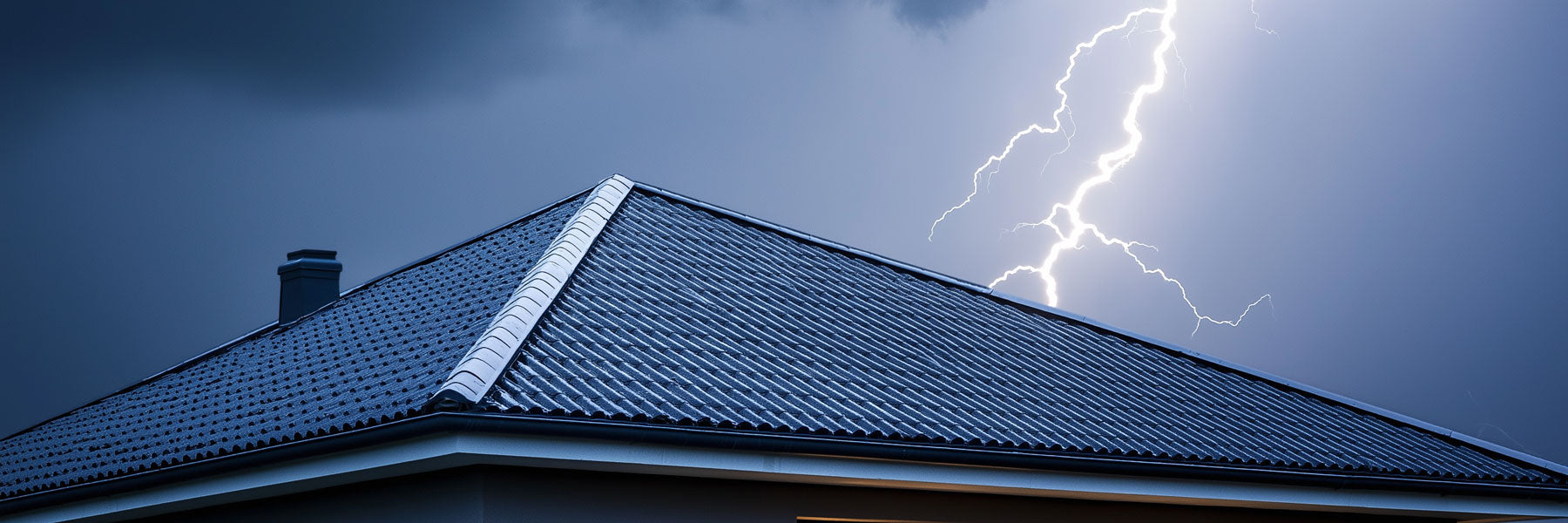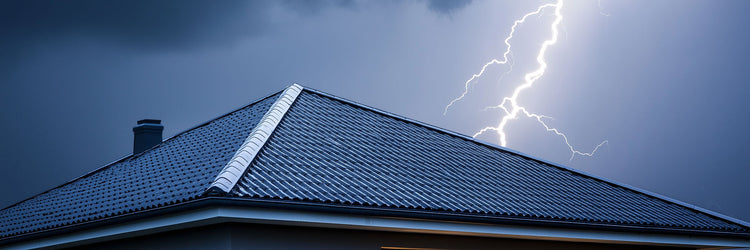Metal Roofs and Lightning: Dispelling the Myths
Did you know that the Empire State Building is struck by lightning an average of 23 times per year? While this might seem alarming, it highlights the power of nature and the importance of understanding how buildings, especially our homes, interact with lightning. Many homeowners are interested in the durability and longevity of metal roofs, but some hesitate due to concerns about lightning strikes. It's a common misconception that metal roofs attract lightning. However, this is not true. In this article, we'll explore the relationship between metal roofs and lightning, examining the science behind lightning strikes and the safety of metal roofs during storms.
Do Metal Roofs Attract Lightning?
No, metal roofs do not attract lightning. The material of a roof does not influence the likelihood of a lightning strike. The chances of a house being struck by lightning are small, but not that small, with some sources reporting the likelihood at around 1 in 200. Instead, lightning is more likely to strike taller structures or those located on higher ground. Lightning seeks the path of least resistance to the ground. While metal roofs are excellent conductors, they are not grounded themselves, and lightning seeks a path to the ground. The material of the roof is not a factor in this process.
How are Metal Roofs Grounded for Lightning Protection?
Metal roofs can be very safe during lightning strikes when properly grounded and protected. While metal roofs don't attract lightning, they are grounded to ensure the safe dispersal of any electrical current from a lightning strike. Grounding involves connecting the roof to the ground with a wire, providing a direct path for the electricity to flow. This prevents the electrical energy from traveling through the building and potentially causing damage or injury.
In addition to grounding, other safety measures for metal roofs include:
- Bonding: This ensures that different parts of the roof are connected, preventing the buildup of electrical charge in one spot. Bonding helps to create a continuous conductive path for the lightning to follow.
- Seam sealing: This helps to prevent any gaps or joints from becoming weak points that could allow electricity to leak. Proper seam sealing maintains the integrity of the roof's surface, ensuring that the electrical current flows safely to the ground.
It's also important to use PVC piping to connect the roof and the home's interior to ensure insulation against potential lightning strikes. This helps to prevent the electrical current from entering the home through plumbing or other conductive materials.
* Highland Metal Roofing does not ground every project, this practice is not very common unless the building is very tall or exposed in open field.
Factors Influencing Lightning Strike Risk
While the type of roofing material doesn't affect the likelihood of a lightning strike, several other factors do influence the risk:
- Area Topography: Buildings located on elevated sites, such as hills or mountaintops, are at greater risk because they are closer to the clouds and more prominent in the landscape.
- Height of the Building: Taller buildings are more likely to be struck than shorter ones in the same area because they provide a more direct path for the lightning to reach the ground.
- Size of the Building: Larger buildings with greater surface area present a larger target for lightning strikes.
- Frequency/Severity of Thunderstorm Activity: Geographic areas with more frequent and severe thunderstorms naturally have a higher risk of lightning strikes.

What Additional Lightning Protection Measures Can be Taken for Homes with Metal Roofs?
Although metal roofs offer inherent safety during lightning storms, homeowners can take additional steps to enhance protection. The only way to guarantee defense against lightning damage is by installing a properly designed lightning protection system (LPS).
An LPS typically includes:
- Air terminals (lightning rods): These are placed at the highest points of the roof to intercept lightning strikes. It's important to use copper air terminals only with stainless steel or copper roofing to avoid galvanic corrosion.
- Conductors: These connect the air terminals to the grounding system, providing a path for the electricity to flow to the ground.
- Grounding electrodes: These direct the lightning current deep into the earth.
- Surge protective devices: These protect electrical circuits and appliances from damage caused by lightning surges.
When installing an LPS on a metal roof, it's crucial to use appropriate attachment methods to avoid damaging the roof or compromising its integrity. Non-penetrating seam clamps are often recommended for attaching conductors and air terminals to metal roofs. It's also important to protect the conductor leads from being torn from their anchorage during wind and snow events, potentially by installing snow retention systems.
In addition to the components of an LPS, it's crucial to bond all metal objects and grounding systems to prevent side flashes during a lightning strike. This includes metal gutters, downspouts, vents, and any other metal components on or near the roof.
Conclusion
Metal roofs are a safe and durable roofing option, even in areas with frequent lightning storms. They do not attract lightning and, in fact, offer superior protection against fire and structural damage compared to other roofing materials. By incorporating proper grounding techniques and considering additional lightning protection measures, homeowners can enjoy the many benefits of metal roofs with peace of mind.
Metal roofs are known for their longevity, often lasting 50 years or more. They are also energy-efficient, reflecting heat away from the home in the summer and reducing energy consumption. With their durability, energy efficiency, and lightning safety, metal roofs are an excellent investment for homeowners seeking a long-lasting and reliable roofing solution. If you're considering a new roof, don't let the myth of lightning attraction deter you from exploring the advantages of metal roofing.

